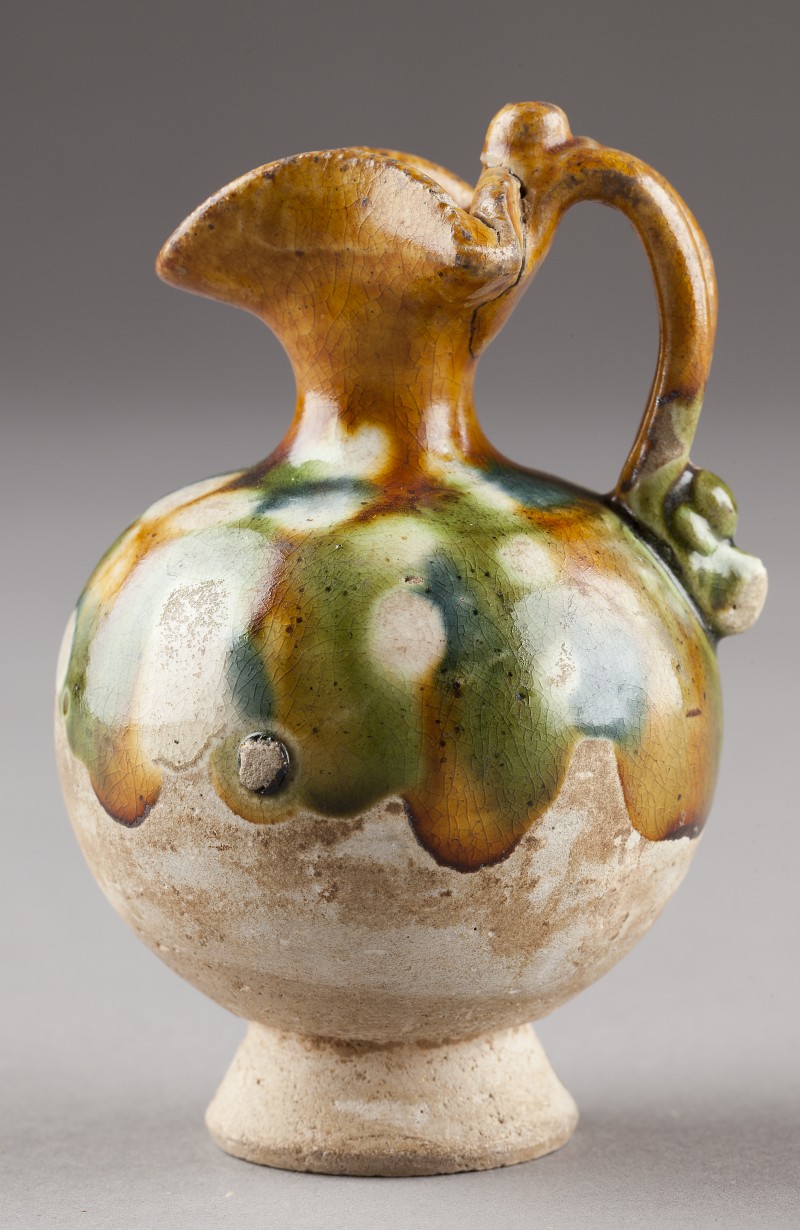
Small model of a larger pitcher (burial ware). Sancai decoration. Tang dynasty, 8th century.
Image courtesy Hallwyl Museum, Stockholm.
Chinese name meaning "three glazes" of a low fired lead glaze based style of decorating earthenware pottery regardless of the actual number of colors of the item. If there is a technical explanation of the term it might be that the colors actually are based on specifically three different oxides i.e. iron giving yellow to brown hues, copper giving green or occasionally brown colors and the rare cobalt for blue. The colors can occur as monochromes or together.
The lead based type of glazes was apparently very similar to the one in use already under the Han dynasty when typically imitating bronzes but a clear continuation of this tradition into Tang (618-907) are so far lacking. The sancai decoration seems instead to have been re-invented around year 675 during the Tang Dynasty. Sancai glazed Tang pottery wares were produced at a limited number of kilns. It is today foremost famous as the beautiful multicolored glazes of the Tang dynasty pottery figures. The glaze occurs on both mortuary pieces for funerary use as well as on utilitarian pieces for use in China as well as exported to Fostat in Egypt and elsewhere.
After the mid 8th century production of these ceramics slowed. The majority of sancai wares were made during the late 7th and early 8th centuries. The style was then continued by the Liao on pieces in a distinctly different repertoire of shapes of their own, went out of fashion by the early Song and were revived along with a multitude of other things "Tang" during the Ming, especially on architechtual items like tiles, on mortuary pieces and on pottery with its decoration outlined with ridges (fahua) and with a slightly extended number of colors.
Sancai wares, literally three colored wares, are earthenware moulded figures and vessels boldly glazed with splashes of bright green and amber on a straw-colored ground. More rarely, blue and a purplish brown are also seen.
These wares are now so deeply associated to the history of Chinese art that it is difficult to imagine that they were first discovered only right at the end of the 19th century, when Tang dynasty tombs were accidentally unearthed in Mangshan near Luoyang by surveyors building the Longhai railway. Although initially ignored, some pieces eventually made their way to the antique market of Liulichang in Beijing where their importance was realized by the renowned philologists Wang Guowei and Luo Zhenyu.
On un-glazed porcelain (biscuit) a decoration in similar splashed or dabbed style starts to occur from possibly late Ming with a high point during Kangxi, appropriately named "Egg-and-Spinach", see further sucancai.
A